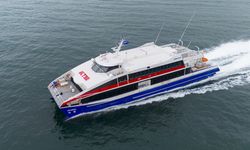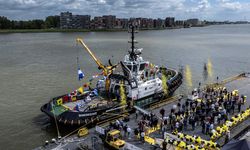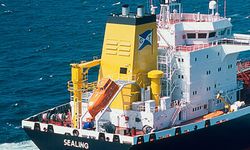China saw its shipbuilding output climb 11.8 percent year-on-year to 42.32 million deadweight tons (DWT) in 2023, accounting for 50.2 percent of the world's total.
In the meantime, new orders soared 56.4 percent on a yearly basis to 71.2 million DWT, taking up 66.6 percent of the world's total last year, said the ministry.
By the end of December, the industry's holding orders reached 139.39 million DWT, marking a significant 32 percent increase compared to the previous year. This volume accounted for a substantial 55 percent share of the global market.
In 2023, China's shipbuilding industry achieved a significant milestone by successfully manufacturing large cruise ships. The inaugural vessel, named Adora Magic City, made its debut in June 2023 and commenced its maiden commercial voyage on January 1, 2024.
To cater to the growing demand for vehicle exports from local clientele, several Chinese shipbuilding companies have initiated mass production of roll-on/roll-off (ro-ro) ships. In tandem with this, domestic ports are enhancing their infrastructure to accommodate these vessels. Notably, Taicang Port in East China's Jiangsu Province invested over 2 billion yuan ($281 million) to construct the largest automobile ro-ro terminal, boasting an annual transport capacity of 1.3 million vehicles.
China's shipbuilding sector is also addressing the burgeoning market demand for environmentally friendly vessels. Guangzhou Shipyard International Co, a key player in the industry, disclosed that over 60 percent of its current orders are for methanol-powered dual-fuel ships or liquefied natural gas-fired dual-fuel models.
These advanced ships, compared to traditional container vessels, exhibit a 20 percent reduction in carbon emissions, along with an 85 percent decrease in nitrogen oxide and a remarkable 99 percent cut in sulfur emissions. This underscores China's commitment to meet evolving market needs while embracing environmentally sustainable practices in the maritime sector.






